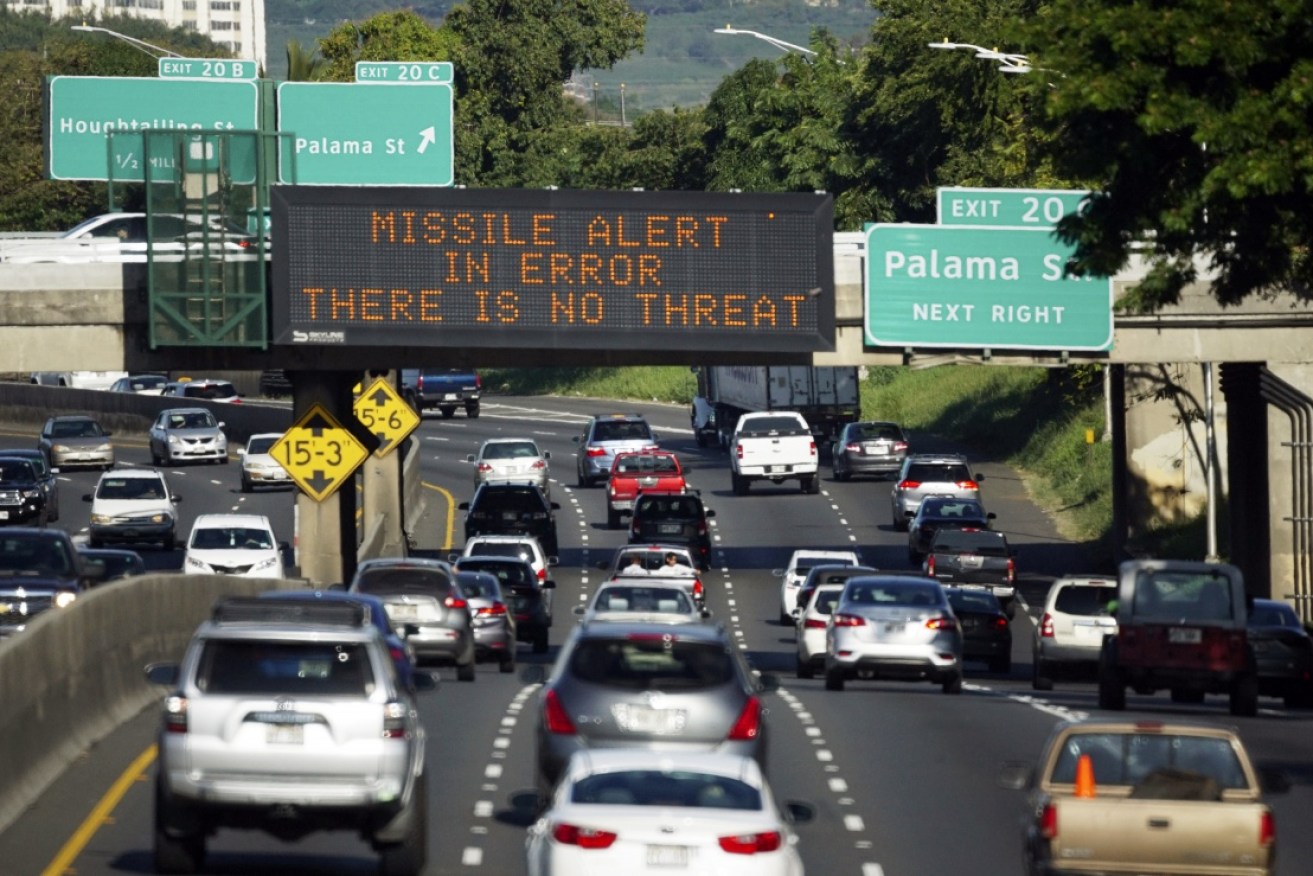Hawaii emergency boss quits over false missile attack alert

The false alert caused more than 40 minutes of sheer panic in Hawaii. Photo: AP
A mistakenly sent Hawaii missile alert that caused widespread panic and confusion has led to the resignation of the state’s emergency management leader and the firing of the worker who sent the false warning.
Major General Joe Logan, the state adjutant general, says Hawaii Emergency Management Agency administrator Vern Miyagi resigned on Tuesday local time.
The employee who has been fired, mistakenly sent an emergency alert to mobile devices and TV and radio stations warning of an incoming missile strike on January 13. Regulators say he mistook a drill for the real thing.
General Logan said a second worker quit before disciplinary action was taken and another was being suspended without pay.
The drill recording did not follow the standard script for a practice and included the phrase: “This is not a drill.”
It ended with the phrase: “Exercise, exercise, exercise.”
The officer who issued the alert heard, “This is not a drill” but did not hear, “Exercise, exercise, exercise”.
Other employees in the watch centre told the FCC they heard the “exercise” language, FCC lawyer James Wiley told Rueters.
The unscheduled drill used a recording mimicking a call from US Pacific Command.
A corrected alert was not sent to mobile devices for nearly 40 minutes because state workers had no prepared message for a false alarm.
The alert sparked a period of sheer panic that saw people hug their loved ones goodbye.
Others fell to their knees and prayed in the streets.
In Honolulu desperate parents tore open concrete storm drains and slipped their children inside.

The message that plunged millions into a mad panic. Photo: Getty.
The FCC said, “A combination of human error and inadequate safeguards contributed to the transmission of this false alert”.
It said Hawaii’s, “lack of preparation for how to respond to this transmission of a false alert” was largely responsible for the 38-minute delay in correcting it and questioned the large number of drills conducted in recent months, as well as why the system software did not differentiate between drills and actual alerts.
“There were no procedures in place to prevent a single person from mistakenly sending a missile alert,” Mr Wiley said.
“We want to minimise both the chances of future false alerts being issued, as well as the impact of any such false alerts,” FCC chairman Ajit Pai said.
Hawaii plans to issue a separate report.








